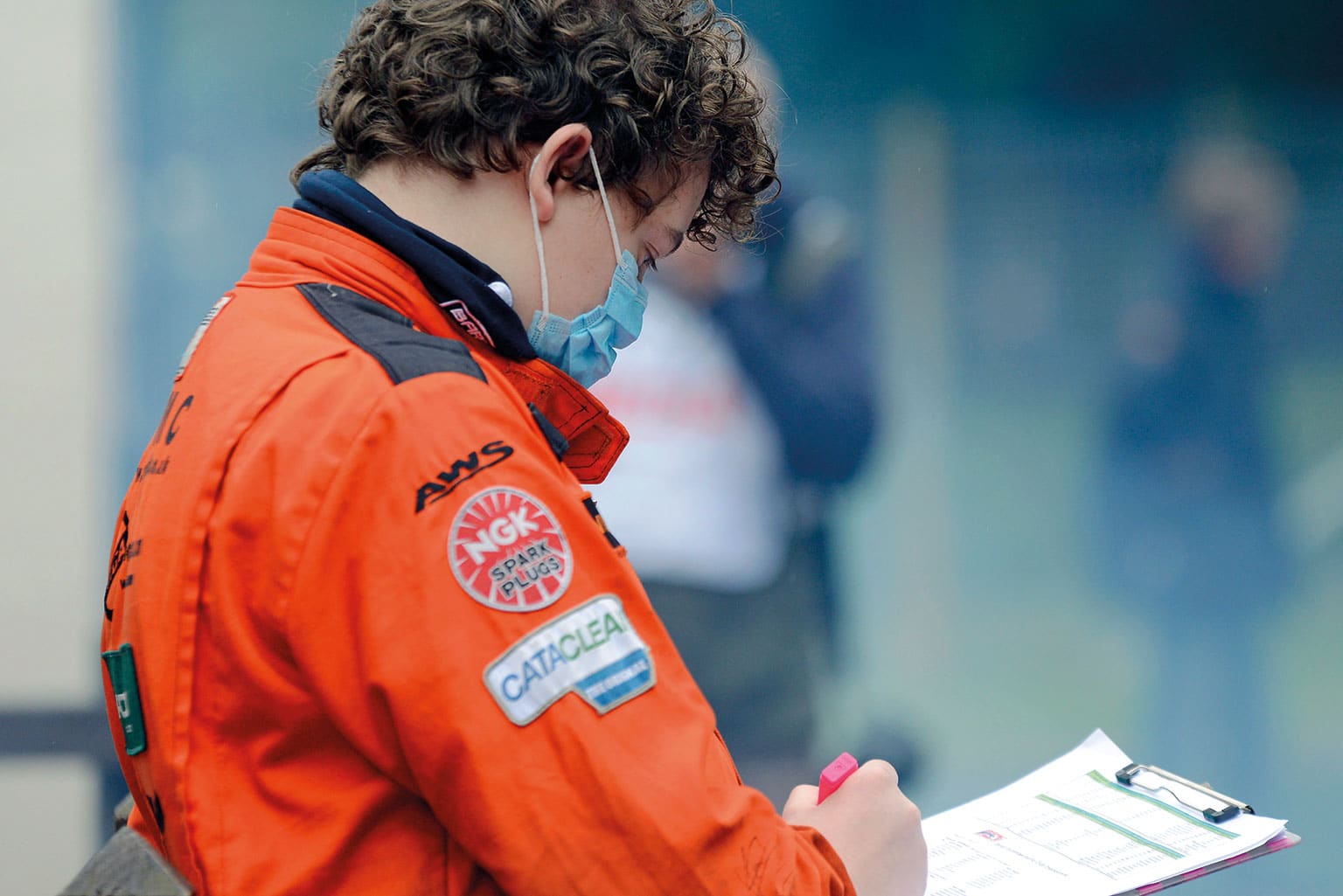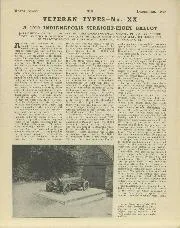

VETERAN TYPES- No. XX
VETERAN TYPES No. XX A 1919 INDIANAPOLIS STRAIGHT-EIGHT BALLOT [A DESCRIPTION OF CECIL CLUTTON'S 1921 3-LITRE GRAND PRIX BALLOT APPEARED IN JULY 1937 "MOTOR SPORT," SO IT MAY BE OF…
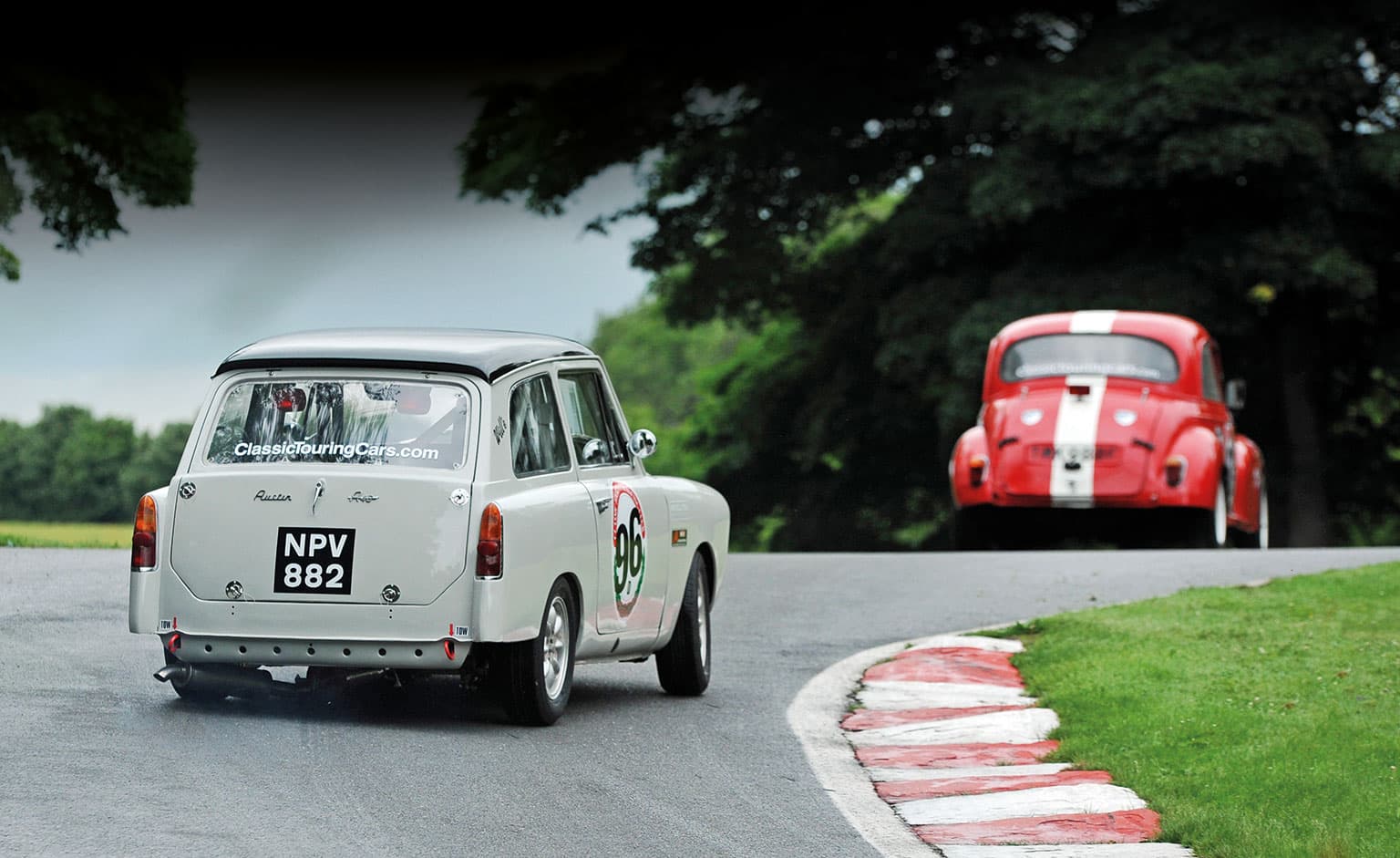
It wasn’t the rasp of internal combustion that first marked this out as a day unlike any other in the recent past, nor that competing cars had three dimensions. Rather, it was the fact that by 7.45am there was already a sizeable queue of shaggy-haired blokes standing two metres apart outside a local barber in Horncastle, where scissors were primed for the first time in more than three months. Not quite the world as we’ve always known it, but a small step in the vague direction of normality.
Eight miles to the north, motor racing was likewise stirring from its lockdown slumber. There had been fragments of competitive activity in March – a motorcycle meeting at Brands Hatch, a spot of rallycross at Lydden Hill – but the UK racing season didn’t truly get going until Saturday, July 4.
It was on this day that Cadwell Park, Snetterton and Castle Combe shared the honour of being the first UK venues to host post-lockdown racing – and Motor Sport was on the ground to witness it.
The most striking thing upon arrival at Cadwell was a prominent notice advising spectators that there would be no admission “until further notice”, a restriction circuit operator MotorSport Vision would lift at all its venues the following weekend.
Beyond the gate, Cadwell was its customarily charming, bucolic self – albeit now festooned with signage reminding people how to conduct themselves safely. The paddock café was open only for takeaways, sign-on formalities (for competitors, marshals and media) had to be completed electronically, in advance, and event organiser the British Automobile Racing Club opted not to produce a race programme, to minimise any manual exchanges. For the same reason, it also cancelled the traditional raffle that enables a few marshals to return home with a cash prize; instead, such funds were diverted to the café so that all those clad in orange could enjoy a complimentary breakfast. And the Tannoy system’s siren call – “Attention paddock, attention paddock!” – rang out with extra frequency, sometimes to inform drivers that they really should be in the assembly area by now, but mostly with reminders about social distancing, the importance of wearing PPE [personal protective equipment] and the need to wash hands frequently and properly.
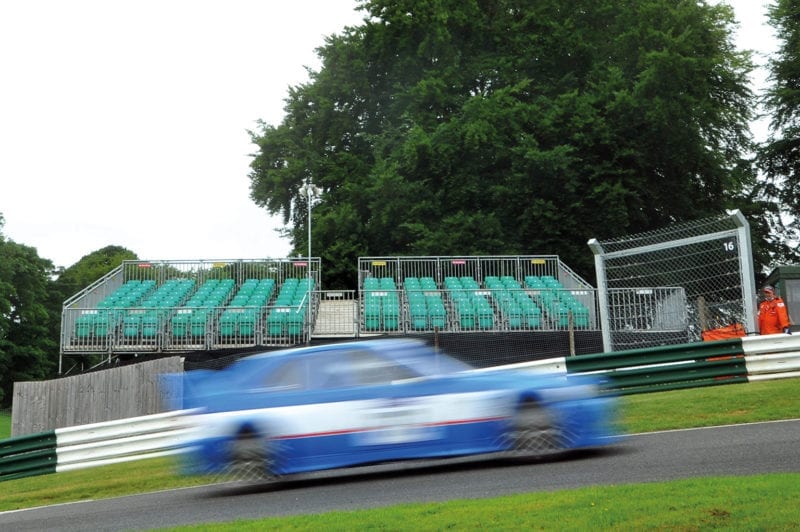
Spectators were not allowed on the first weekend, but MSV has since relaxed this
“I have been working here throughout, with a couple of maintenance guys,” says circuit manager Paul Woodford, “just to make sure everything was ready as and when racing could return. Track days resumed towards the end of May and those have been very useful in terms of putting procedures in place, so that social distancing requirements were manageable and easy for visitors to understand. “I found it very hard when the whole thing just stopped, because – like most people who are involved in this industry – I am at heart a committed enthusiast and absolutely love the sport. There have been some positives, though, not least that I think the lockdown period has brought all the MSV track managers closer together thanks to daily conference calls to discuss and share ideas – the kind of thing for which we wouldn’t ordinarily have had much time.
“Over the winter we invested significantly in extending the asphalt area of the paddock – a financial commitment we almost certainly wouldn’t have made if we’d known what was coming, but with hindsight I’m glad we did because it has helped us to lay things out responsibly. We have lost a few events as a result of the lockdown – notably our British Superbike meeting. That’s a blow, of course, but we’ve been assured it will return in 2021 and, as things stand, we have something happening pretty much every weekend between now and the end of the season. We’re further ahead than I thought we might be not so long ago, but we live in a climate of continued uncertainty and I hope people don’t become complacent.”
Practice has not long commenced when the distinctive purr of racing Citroën 2CVs is drowned out by the rotary clatter of an incoming Agusta 109. MSV chief executive Jonathan Palmer is on the second leg of a three-part helicopter tour – a track day at Donington Park, followed by visits to Cadwell and Snetterton.
“I have been immensely impressed by the way everybody in the business has collaborated over the past few months, to enable us to get to this point,” he says. “Some of the things we’ve had to do – remote sign-on, for instance – will probably be adopted in the longer term, now we’ve seen how well they work. It doesn’t seem so very different, really. It reminds me of the feeling you get when you receive the keys to a new house, take a look around and think, ‘Yes, after all that waiting, this is finally happening’.”
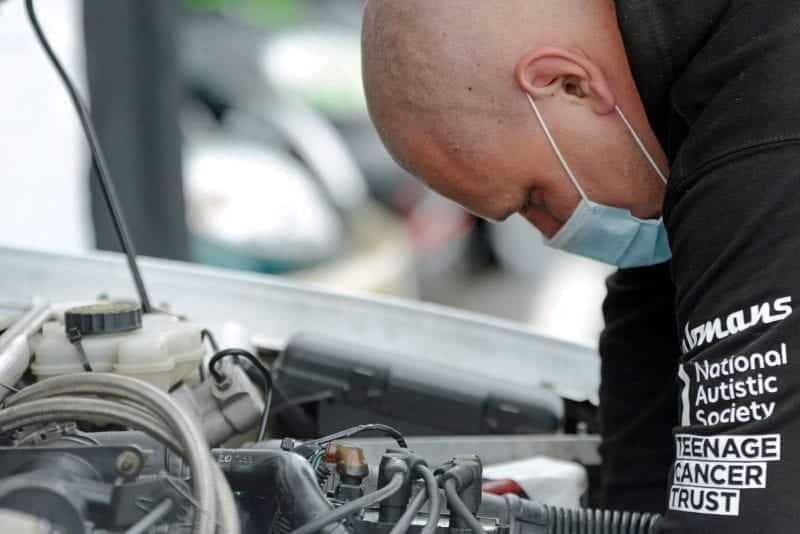
Technical tweaks and scrutineering are still hands-on affairs, even if facemasks have become the new paddock must-haves
For the 2CV aficionados, this could be a fairly short campaign. “We usually have four sprint meetings a year,” says established racer Chris Yates, “but have already lost three of those. We’re hoping to organise an extra meeting at Mallory Park, but otherwise this could be our only outing other than the traditional 24 Hours at Snetterton in August. It has been quite disheartening over the past few months, trying to keep up with all the changes and constantly preparing for the unknown, so it’s nice to be back.”
He is offering a helping hand to newcomer Andi Donaldson, for whom this will be a first car race of any kind. “It has been quite a wait,” the newcomer says. “I had the van packed and all ready to go for what should have been my debut at Silverstone in March…”
Half a meadow away, Stuart Radford is preparing one of the engaging rarities that underpins much of British club racing’s appeal – a Gulf-hued Triumph Vitesse, part of a diverse entry that includes everything from Morris Minors to Aussie V8 Supercars via Superkarts, Hillman Imps and the aforementioned 2CVs. “I raced a Triumph 2000 for years and loved it,” he says, “but it was far too heavy to have a chance against Cortinas and stuff, so I built this – it’s 200kg lighter. I did a few events with it last year, as a shakedown, but this was supposed to be its first full season. I’m pleased to be racing again and felt slightly overwhelmed by all the paperwork we’ve been sent – there has been absolutely loads of information and it all seems to have been very well organised.”
Out on the circuit, marshals are dotted around in groups of two – and the post at the exit of Charlies, a long, sweeping right-hander, is staffed by Lesley Bull and Tony Tillbrook. Both have been working normally throughout the lockdown, she as a residential care worker and he as an HGV technician. It’s the first time either of them has been trackside since the previous November.
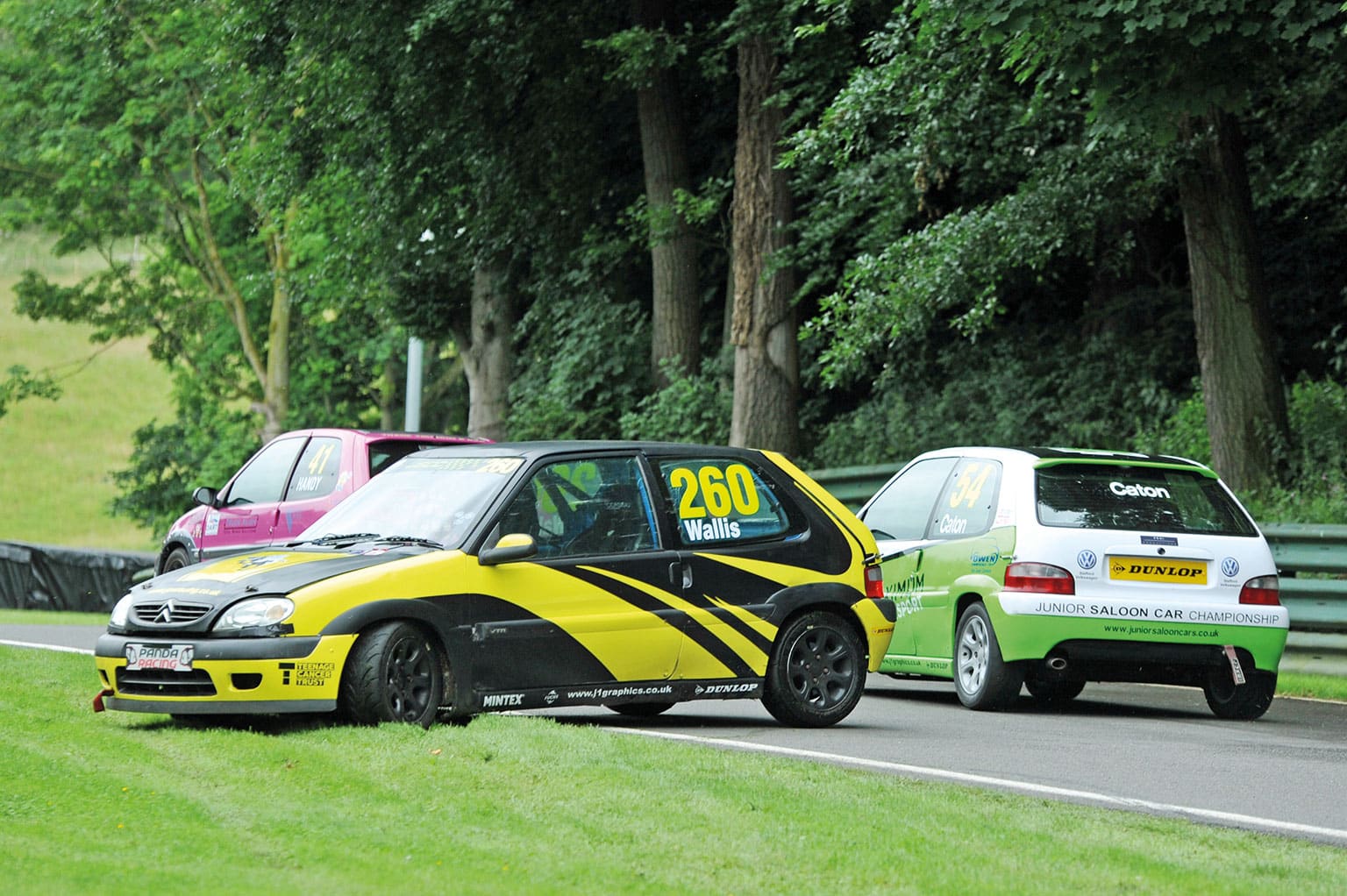
“It’s great to see everybody again,” Tony says, “though traditionally we’d all sit down for a catch-up over breakfast and obviously that’s not possible at the moment. Mostly, it’s just a relief that we have some racing.”
Lesley adds: “This is my happy place and I’ve been itching to get back. It’s great to be reunited with what I call my orange family. The only downside is that I want to give them all a hug or a handshake, but I can’t…”
